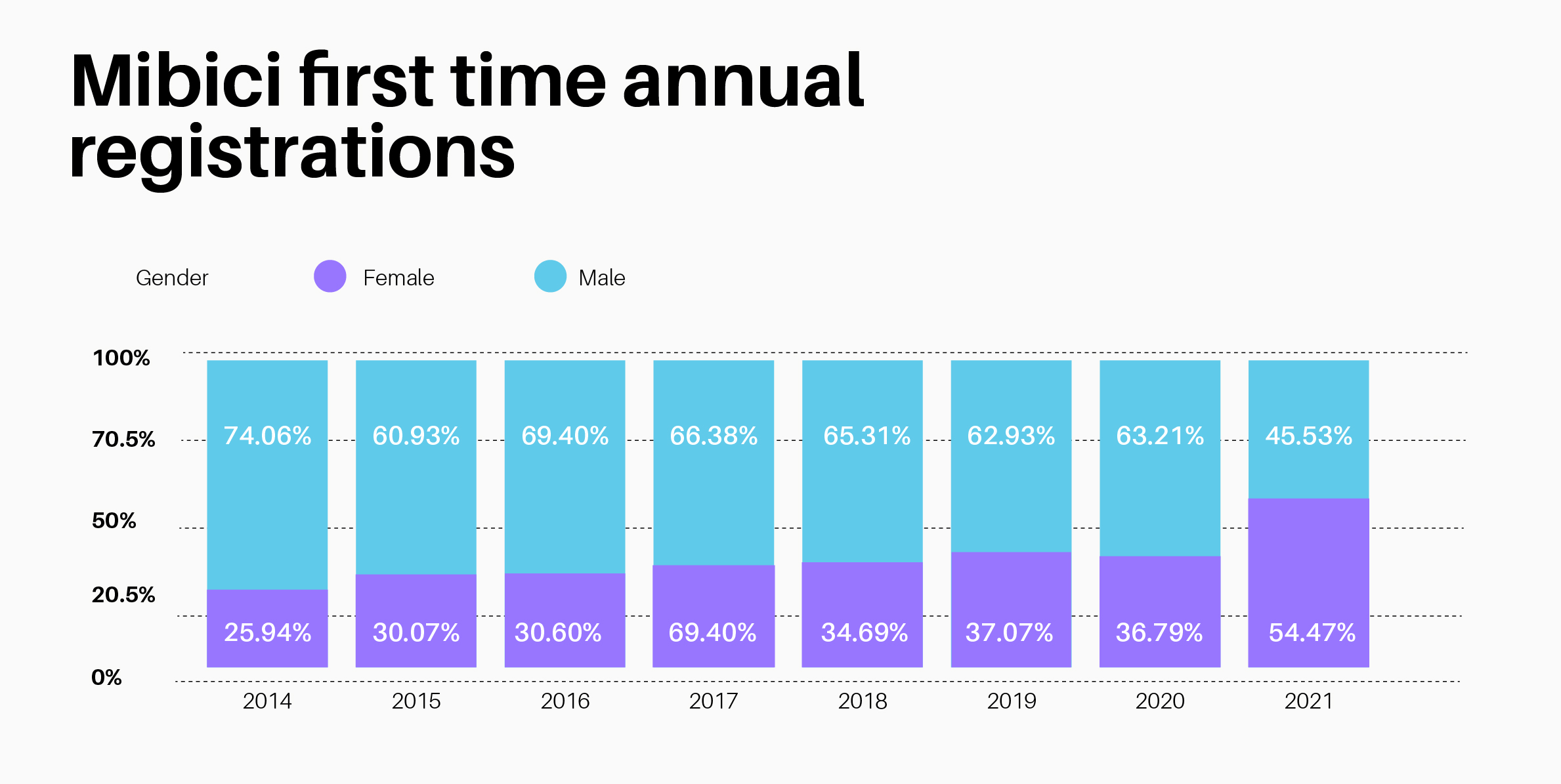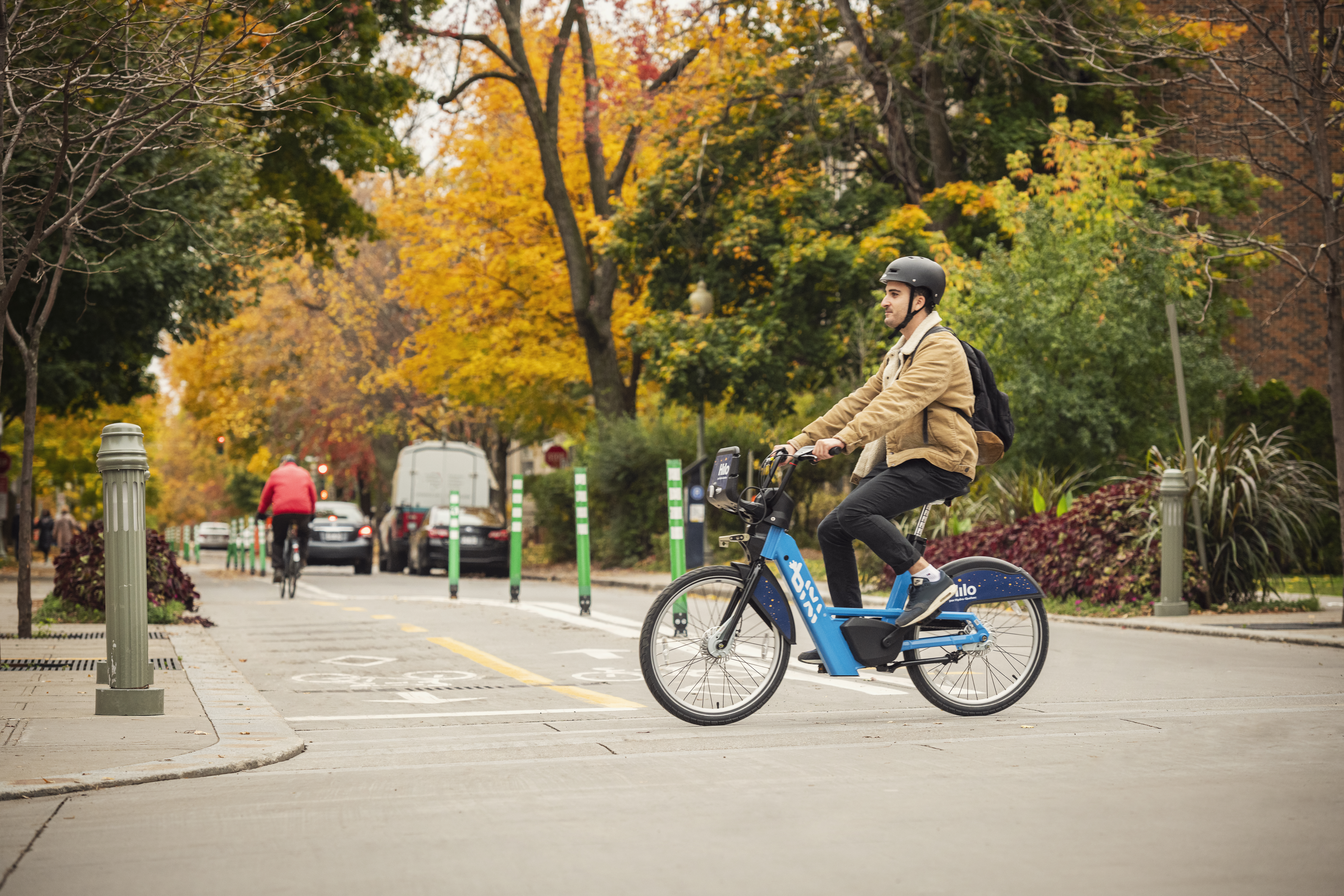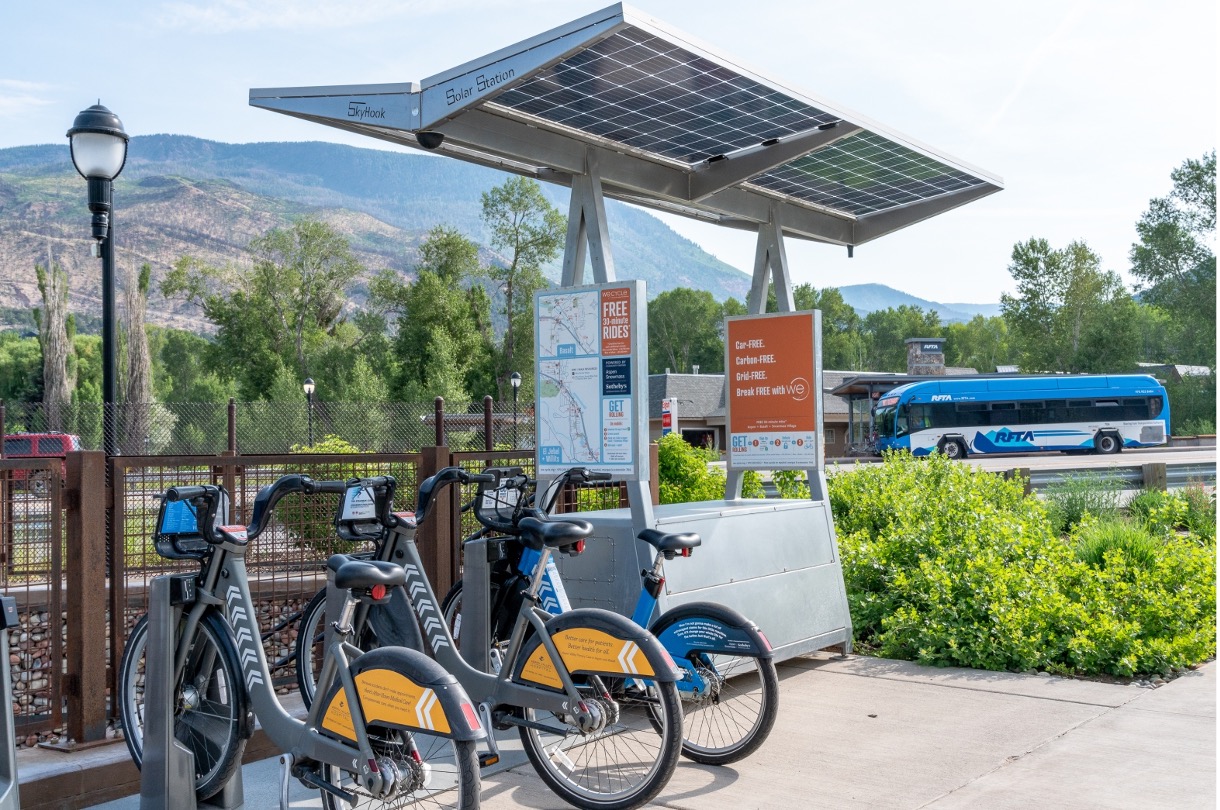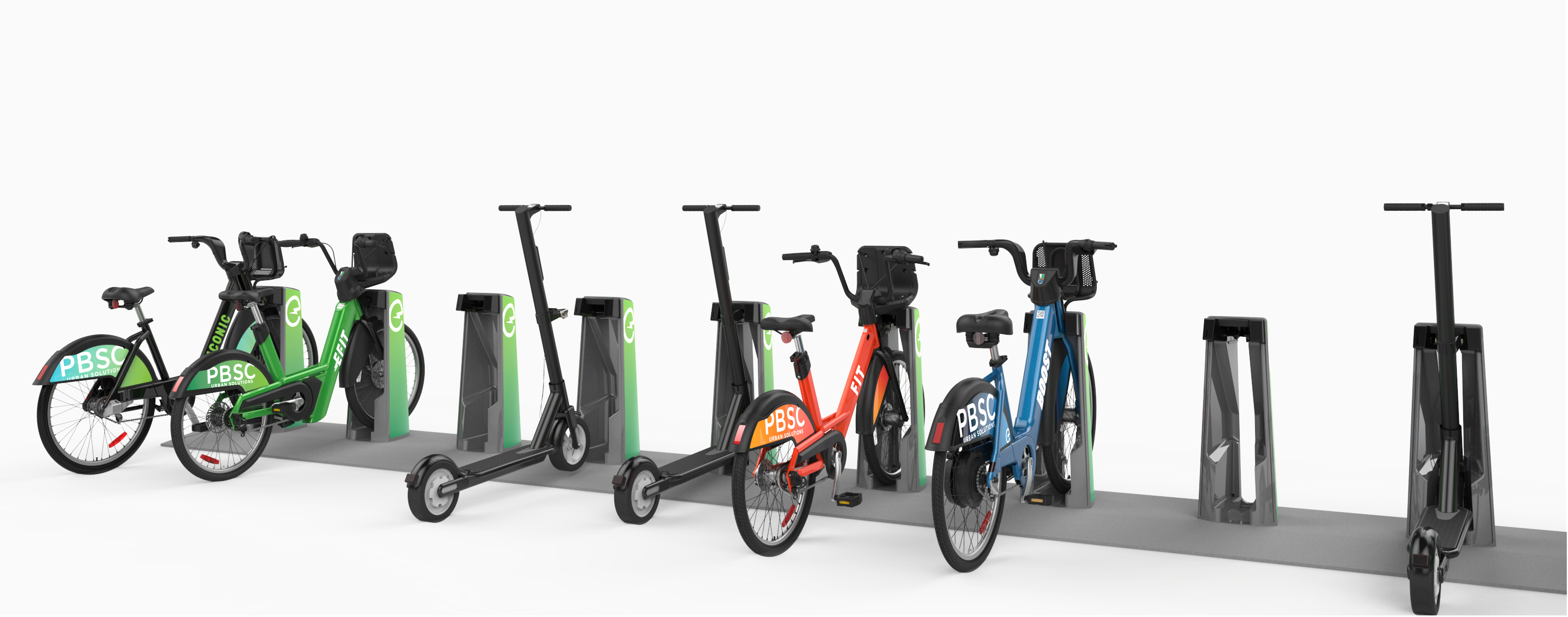
4 key takeaways from PolisMOBILITY 2024 Conference in Cologne
May 28, 2024 — Events & awardsPBSC arrives in Austin, Texas!
Learn moreEvents & awards
The NABSA Conference is a two-days annual conference organized by the North American Bikeshare and Scootershare Association. NABSA brings together actors in the micromobility market across the world, such as bikeshare, scooter-share, and transportation leaders, advocates, operators, and equipment providers to speak about the shared micro-mobility industry, its challenges, success and what’s to come. The goal is to share, learn and inspire through different topics with the aim of developing together the future of shared micromobility.
This year, the conference took place virtually with diverse interactive sessions. A lot of subjects have been brought to the table from different businesses to improve the future of the industry. So, if you missed it, here is a sum up of the 5 points to remember for this 2021 edition, according to PBSC.
Climate change is at the heart of discussion, especially in the transport sector, since it’s one of the most polluting sectors. It has been said during one of the sessions that personal mobility accounts for approximately 17% of global emissions. Thereby, many cities need to rethink infrastructure and act to reduce personal automobile use, whereas governmental assistance in cities will be crucial towards pushing for real, long-lasting change.

However, sustainability is not only about riding a shared bike or scooter. Businesses must think about the whole life cycle of their product. How can we produce more sustainably? How can we maximise the longevity of our battery? Recycling, reuse, circular economy and renewable energy are predominant words. The sensitive subject of batteries was highlighted because of their environmental impact, especially due to lithium-ion, which remains difficult to recycle. Every player in the micromobility industry is readily tackling this concern and looking for ways to improve recycling and the reusability of materials. In many parts of the world, bike share system providers such as PBSC are partnered with local organizations that ensure batteries do not end up in landfills.
Docking and Charging are the topics at hand today in the industry. How can we charge more sustainably? How can multiple operators work cohesively in cities where micromobility is prominent? Meanwhile, PBSC partner, WE-CYCLE, celebrates a successful year one of our joint sustainable charging pilot, alongside Skyhook Solar, where they were able to get 100% solar charging for their e-bike fleets. This is just the beginning - solar charging could be a monumental next step in achieving true sustainability in micromobility.
Every city is different in terms of its people, its organization, its socio-economic composition and many more factors. Businesses have to think differently from one city to the other, to adapt their services to the city. Each shared micromobility companies play a role in improving gender, social or racial equity and inclusivity with their services. How can providers, operators, and cities provide an equitable and more inclusive access to shared micromobility services? What are the challenges and issues that the industry needs to work on?
Shared micromobility is a young sector that continues to adapt and evolve as it expands into more cities across the world. Each city, alongside the system providers and operators, will have a significant role to play when it comes to offering a suitable and inclusive service: How can we provide access to stations to everybody in large cities? What types of vehicles can be adapted to all kinds of bodies and abilities? Where are the users and the non-users and what are the obstacles for non-users? How can we improve gender equity by encouraging safe access to services for all women? And many more challenges.
To address these challenges, we must work cooperatively with cities. Our partner Mibici in Guadalajara announced during the conference that in 2021 their Bikesharing system registered 54,47% of women using their bikes against 45,53% of men. A record that proves it's possible to move forward to a better and more inclusive future.

“The future is electric” is what we hear nowadays. Electrification in shared mobility is growing across the world and appears as a solution to move to a sustainable transportation. Therefore, businesses play a role in the electrification of micromobility. Cities want to electrify their stations and bike-share programs and that means a transition with technical and operational requirements and development of new technologies. In fact, e-bikes and e-scooters have different processes. How can businesses develop and adapt their technology and how can cities transition to this new technology? What about batteries: How to charge or swap batteries efficiently? What method of charging works the best for the battery lifecycle and is the most sustainable?
From a user point of view, people have to adopt this new kind of mobility. How can businesses change the culture? How can industries electrify the fleet and improve the user's experience? Moreover, e-bikes are used in a different way, people are taking much longer trips with an e-bike than a normal bike. This is an extra challenge that businesses are facing, we must rethink our strategy and adapt to these changes.

Finally, as we already know, with electrification emerge environmental challenges with battery consumption and disposal, especially with battery recycling.
But it is possible to develop electrifying and sustainable transportation. For example, Gian Carlo Crivello, PBSC’s CRO presented solar powered charging, a project in which PBSC has invested. It’s one of the world's first fully functional solar powered bike charging stations, based in Aspen, Colorado. The pilot was a success and the project will soon be expanded.

By rethinking their shared micromobility systems, providers and operators take into account the vision behind mobility hubs. Each city is different and has its own identity. Businesses have to adapt to these identities and find a better way to collaborate with cites to provide better, more adapted and convenient services for users. How can bikeshare programs and mobility hubs with docking and charging stations and kiosks be integrated with public transit? What kind of mobility hubs can we expect for tomorrow’s urban areas?
For some bikeshare providers and operators, the ideal would be public transit as a service and bikeshare as an extension of that service, which means a centralized location for all shared vehicles, to pick it up and bring it back, and to recharge batteries of electric vehicles. The challenge is to develop a technology that is integrated at this public transit and that operates the same way (app, subscription). Moreover, another challenge appears with mobility hubs: what kind of charging solution and stations should we provide? The stake of this is to have universal charging so that it suits different vehicles. What type of connectors, batteries?
PBSC developed the multimodal solution to help cities to be more organized. It’s a smart station that can accommodate various e-scooters in stations along with our bikes. That gives an example of tomorrow's mobility hubs that can be elaborate in cities.
Mobility data is key for building better transportation ecosystems. It helps assess technical and policy decisions of organisations but must be used responsibly. It's important to protect individual privacy, such as the privacy of users' movements. Cities, solution providers and operators each have their own sets of data and are beginning to share with each-other. But how can we reconcile the need of collecting data with users' privacy? How can we protect privacy and sharing mobility data?
The industry is young, so there are still many gaps in how data is handled. More governments and people are starting to ask questions about how their data is being handled, especially by private micromobility companies that operate outside of the city’s government. What should the process be of sharing data and exactly how much data do micromobility companies need? These are important questions going forward as the industry begins to evolve around privacy laws in different cities, especially considering how crucial data is to decision-making in cities based on the impact of micromobility systems operating on their streets.
In fact, a group of cities and micromobility companies recently agreed to 7 guidelines to keep rider data private. This illustrates that organizations are trying to make it a better way to protect users. The guidelines are the product of a collaboration from 20+ cities, privacy advocates, mobility service providers and organizations that included New Urban Mobility Alliance, Open Mobility Foundation and NABSA.
So, as you can read, this year’s conference was packed with interesting speakers and thoughtful sessions that underscore challenges of the micromobility industry. A lot of companies shared their findings and experience to help enhance the market. Thanks to NABSA for organizing this conference!
See you next year for the 2022 NABSA Conference in Guadalajara!
To learn more about PBSC’s global impact, Smart Cities, industry news, updates on technologies and events,sign up to the PBSC Newsletter today.

Are you looking to become a local operator or bring Bike Share to your city?
Contact us at info@pbsc.com